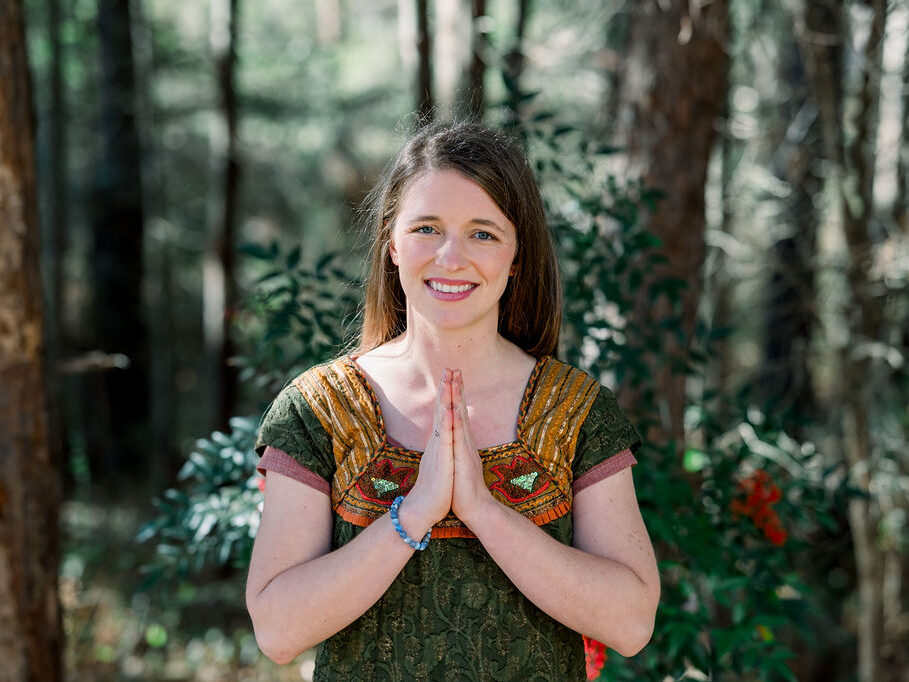
Child’s Pose (Balasana): Benefits, Variations, and Practice Tips
What is Child’s Pose (Balasana)?
Child’s Pose, known as Balasana in Sanskrit, is a gentle, restorative hatha yoga posture that practitioners of Ashtanga and Yin Yoga at every skill level appreciate. This simple yet powerful Pose helps calm the mind, relieve stress, and gently stretch the body, making it an essential part of any yoga routine. This article explores the what, how, benefits, and variations of the much-loved Child’s Pose.
Child’s Pose (Balasana) 101

In Sanskrit, Balasana translates literally to “child’s pose.” (Bala = Child + Asana = Pose). It involves kneeling comfortably on your mat, sitting back on your heels, and gently folding your torso forward to rest between your thighs. Your arms can either extend forward or rest comfortably beside your body, palms facing upward or down.
Key Benefits of Child’s Pose
Child’s Pose (Balansana in Sanskrit) has many restorative and healing benefits. Here are just a few:
- Spinal Relief: Balasana gently elongates your spine, easing tension in your back and shoulders.
- Stress Reduction: The forward fold naturally calms your nervous system, reducing anxiety and stress.
- Improved Digestion: Gentle compression of your abdomen can stimulate digestion.
- Hip Flexibility: Regular practice can help open and stretch the hips and thighs, improving flexibility.
These benefits demonstrate why Balasana is widely favored for physical relaxation and emotional comfort.
Looking for more hip-focused poses? Check out our article on Cow Face / Shoelace Pose or Deer Pose.
How to Do Child’s Pose
- Start Child’s Pose by kneeling on your yoga mat, with your knees together or slightly apart, depending on your comfort and body structure.
- Sit back onto your heels, feeling your glutes press against your feet. Place a blanket or cushion between your thighs and calves if you feel uncomfortable.
- Fold forward at your hips, bringing your chest down to rest on or between your thighs.
- Extend your arms forward with palms facing down, or keep your arms relaxed alongside your body with palms facing up.
- Rest your forehead on the mat, allowing the neck to lengthen and the shoulders to relax. If your forehead doesn’t reach the mat comfortably, use a block or a cushion for support.
- Breathe deeply, focusing on each inhale and exhale. Let your entire body relax on the floor, feeling Child’s Pose stretch in your back, hips, and thighs.
- Try to stay in the Pose for at least 10 Breaths. Yin Yoga practitioners remain in Child’s Pose two minutes or more.

Variations to Explore
There are several Balasana variations, allowing you to modify the Pose according to your body’s needs:
- Extended Child’s Pose: Reach your hands and arms forward while in the Pose. Focus on stretching your shoulders and arms while deepening the spinal stretch.
- Wide-Knee Child’s Pose: The knees are spread wide apart, with the toes touching, creating more space for the torso and a deeper hip opening.
- Supported Child’s Pose: Need more comfort and support? Place bolsters, blocks, and/or blankets beneath your torso or bottom
- Side Stretch Variation: Move your hands to one side to gently stretch the opposite side of your torso, enhancing lateral flexibility.
Exploring these child’s pose variations helps customize your practice, making Balasana accessible and beneficial for everyone.
Safe Practice Tips
Here are a few tips for maximum benefits and comfort in Child’s Pose (Balasana), consider these tips:
- Use Props: Place cushions, blankets, or bolsters under your hips, torso, or forehead for additional comfort.
- Protect Your Knees: If your knees feel strained, insert a folded blanket or cushion between your calves and thighs.
- Stay Gentle: Go slowly, ease into the posture, and avoid force or excessive pressure.
- Maintain Deep Breathing: While in Child’s Pose focus on deep, steady breaths to further relax your body and mind.

Integrating the Pose into Your Routine
Child’s Pose is versatile and fits naturally at different points in your yoga practice:
- Warm-Up: Begin your yoga practice with Balasana to calm the mind, center the breath, and gently awaken your body.
- Resting Between Poses: Use it as a mind and body rest and recharge between challenging asanas.
- Cool-Down: End your yoga practice with Balasana to encourage relaxation and reflection.
Whether you are an Ashtanga or Yin Yoga Practitioner, including Balasana (Child’s Pose) in your practice can significantly enhance your yoga experience and overall wellness.
My Final Thoughts on Balasana
When we think of the healing qualities of yoga, and more specifically, Asanas, Balasana is always considered. Child’s Pose is easy, and its benefits for the mind and body make it an indispensable part of any yang or yin yoga practice. So, if you are not a regular practitioner of Balasana, why aren’t you?
Source: Wikipedia
Kevin Parenteau
He is a long-time Ashtanga and Yin Yoga Practitioner. Vipassana Meditator, Yoga teacher,
And all-around Yoga Nerd.
Writes on Yoga Asana Practice, Meditation, Chakras, Yoga Education and Philosophy
The post Child’s Pose (Balasana): Benefits, Variations, and Practice Tips appeared first on Asana at Home Online Yoga Inc..
Written By Kevin Parenteau for Asana at Home Online Yoga Inc. – Asana at Home Online Yoga








